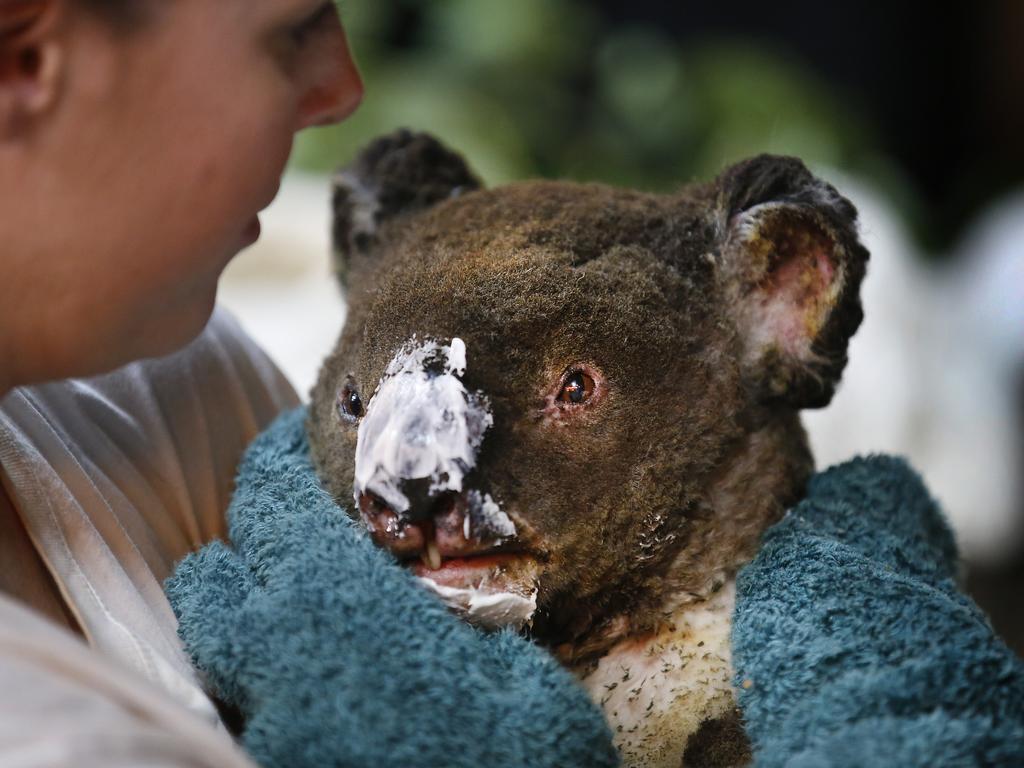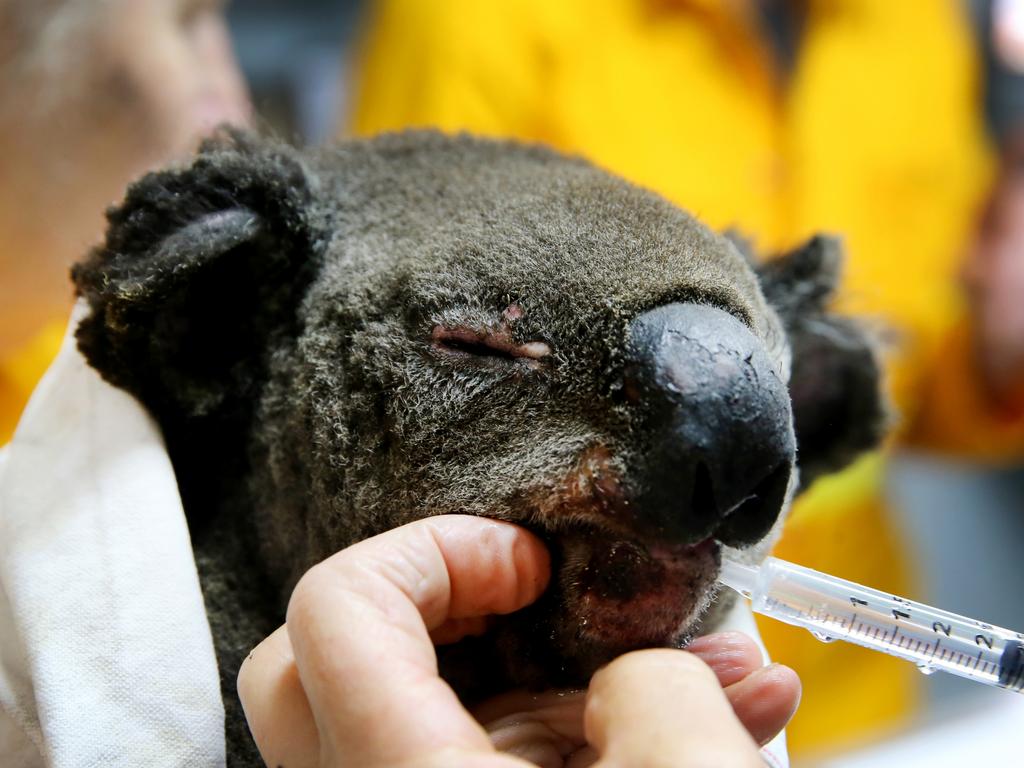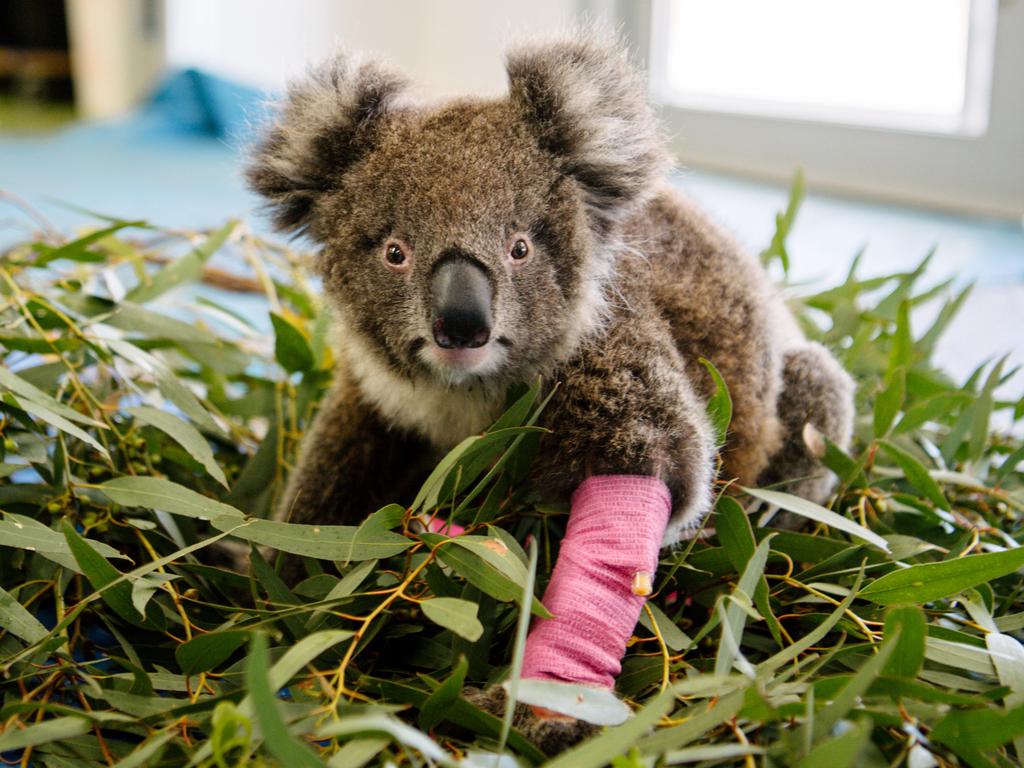Expert says koala population will be able to survive Australia’s catastrophic bushfires
It’s not all grim news for koalas killed in the bushfires, with fears the favourite Aussie animal could become “functionally extinct” are untrue.
With so much bad news about the millions of animals lost and koala populations being completely decimated, there is at least some good news about our friends.
A Central Queensland University koala expert has said as catastrophic as the bushfires around Australia were, the koala was not facing extinction.
Asked whether the nation’s koala populations would recover from the bushfires raging in NSW and Victoria, Dr Alistair Melzer said that in any one region, survival was dependent upon the local extent and severity of the fires and on the size and condition of the unburned fire refuges.
“It depends on the situation,” he said.
“Where there has been catastrophic crown fires the local populations will have been lost. Koalas instinctively climb to the top of trees, so they will have been lost in places where those types of fires have happened. Not just koalas, but many other animals.”
RELATED: The koala desperately needs our help

Dr Melzer said as much as the fires had been devastating it didn’t mean the koala was functionally extinct.
Functionally extinct means that a koala living today has a joey and that joey doesn’t go on to have another joey.
The Australian Koala Foundation (AKF) estimates there are less than 100,000 koalas left in the wild, possibly as few as 43,000, all residing in the east of the country
The AKF has said if there really was lower than 50,000 koalas left, the species would be “functionally extinct”.
“There will be population impacts on local and regional areas in Victoria and southeastern NSW, but the species will be able to survive,” Dr Melzer said.

Dr Melzer said the bushfires were of a different intensity in parts of NSW and Queensland however, and some habitats were already recovering, giving surviving koalas a chance to expand from those “fire refuges”.
“We have received accounts of healthy koalas surviving the fires in the Carnarvon Ranges in Central Queensland and in some northern New South Wales forests,” he said.
“Those surviving koalas will have to adapt in these areas - will they find enough food resources?
“Koalas are dependent on eucalypt for both food and water. With the prolonged drought and heat and now these bushfires the quality of that foliage will go down, which may limit the availability of water, and the nutrient content of the foliage.”
He said this may also reduce their reproductive capacity.
“Koalas will be able to recover, but that’s dependent on this climate change-driven drought, aquifers and tree recovery,” he said.
“The impacts on koalas and their habitat is more severe in eastern New South Wales, Victoria and South Australia, but much less so in Queensland which has a different landscape.
“Much of the koala habitat in Queensland has a simpler, more open structure and is less likely to experience crown fires.

“If this (the extreme drought, heatwave and extensive bushfires) is going to become the norm we will have to be prepared for a change in distribution of the koala and of the koala habitat in coming decades.”
He said the unreliability of population estimates made it difficult to calculate the actual numbers of koalas lost to the bushfires, but he said these losses compound those caused by the ongoing drought.
“It’s more important to look at the impact on the extent of the habitat, rather than koala numbers,” he said.
“Koalas mostly live in low-density areas and their population is extensively connected so their recovery will depend on how the habitat recovers.
“We need to remember that as catastrophic as these fires are they are a product of the extensive drought in Australia and it was already having an impact and will likely continue to have an impact for at least the rest of this year.”




